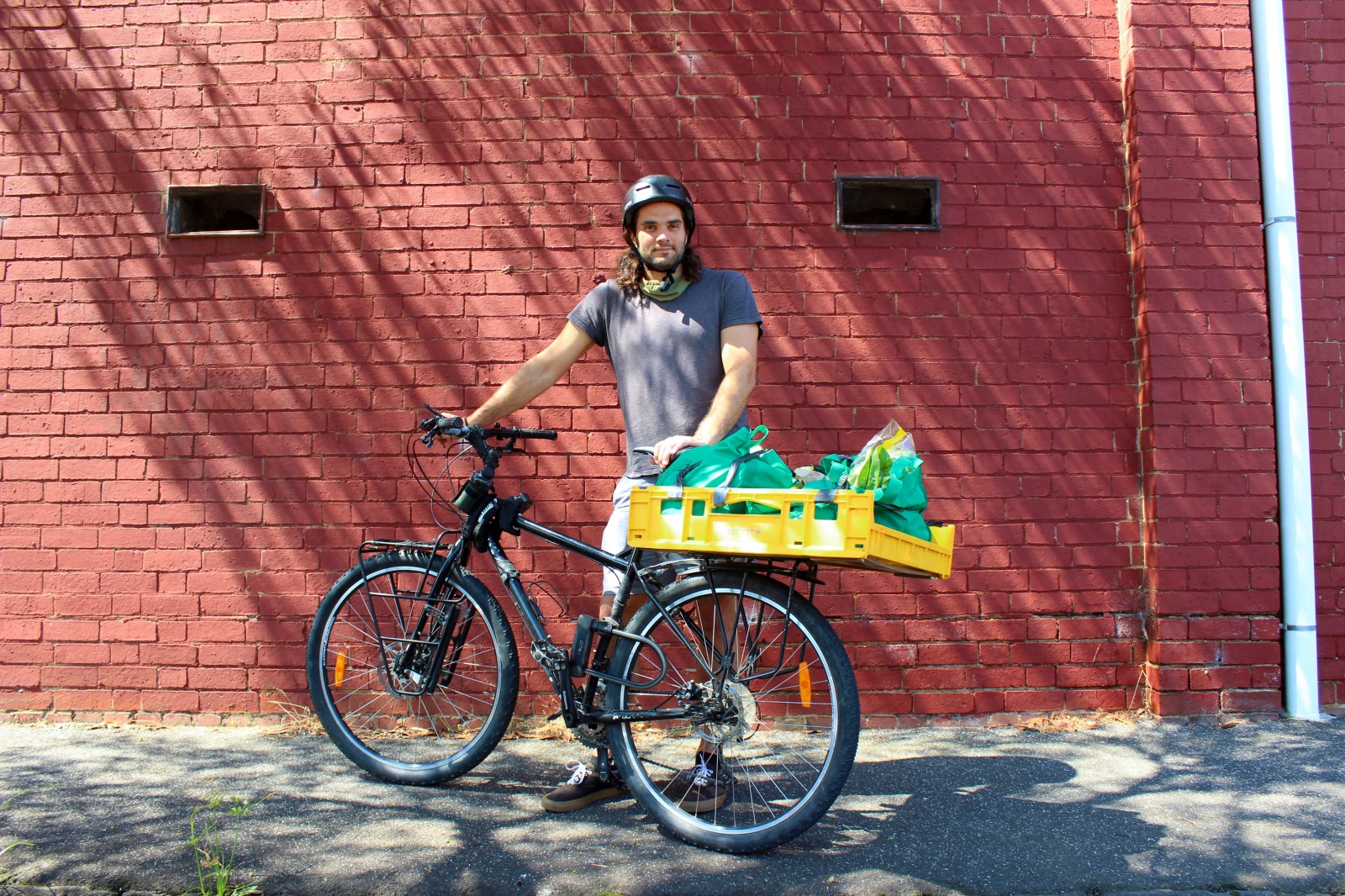 |
| Author with bike in 'ute-mode' carrying a week's worth of groceries with room to spare! |
I don’t own a car. These days I ride pretty much everywhere, and in all conditions. But it wasn’t always this way. I used to view cycling as a recreational or supplementary form of transport and as a teenager I barely rode my bicycle at all, even though (had I realised it) riding to school would have cut my commute time in half compared to public transport. Ten years on, I find myself regularly evangelising about the many joys and advantages of using a bike as a primary vehicle.
But in my experience, most people already have their own reasons to ride more: whether it be the numerous health benefits, the delight of being out and about under pedal power, the cheaper cost, or the considerable reduction in emissions and traffic congestion. Most people already think cycling more would be a good idea, and surveys show that most of us would truly like to ride more than we currently do.
So what’s stopping us? The main thing stopping me was I simply didn’t realise how possible it is. Below you’ll find a discussion of most of the common barriers to cycling and some ways to overcome or mitigate them. It should be said at the outset though, I’m a 28-year-old male living in the inner city: I am in the most advantageous position possible to ride as much as I do. But it is far from an all-or-nothing equation: almost all of us are able to ride much more than we might imagine. This guide will help us do just that.
1. Time and Distance
A common assumption is that cycling is simply slower than driving. For journeys over 5km this is often true, but in a city context, even for journeys between five and ten kilometres, the difference can be only a matter of minutes. The easiest way to test this for your area is simply to plug in a destination on Google Maps and compare the times: you might be surprised. For short trips though, especially during peak-hour traffic or those involving multiple stops, cycling can actually be faster than driving. No traffic also makes arrival times more predictable. Studies estimate that around half of all car trips made are under 5km, why not see how many of yours could be done on a bike?
In our busy world it can be tempting to prioritise efficiency, but a hidden advantage of cycling can come precisely when it takes longer. Cycling creates breathing room between activities: a chance to ease into the day or wind down after work. What’s more, many of us struggle to get as much exercise as our bodies (and brains) need, especially when we view exercise as a separate activity to carve out time for in the day. Cycling regularly therefore can be more ‘efficient’ than a gym membership or going for a run, as this exercise is fully integrated into a daily rhythm.
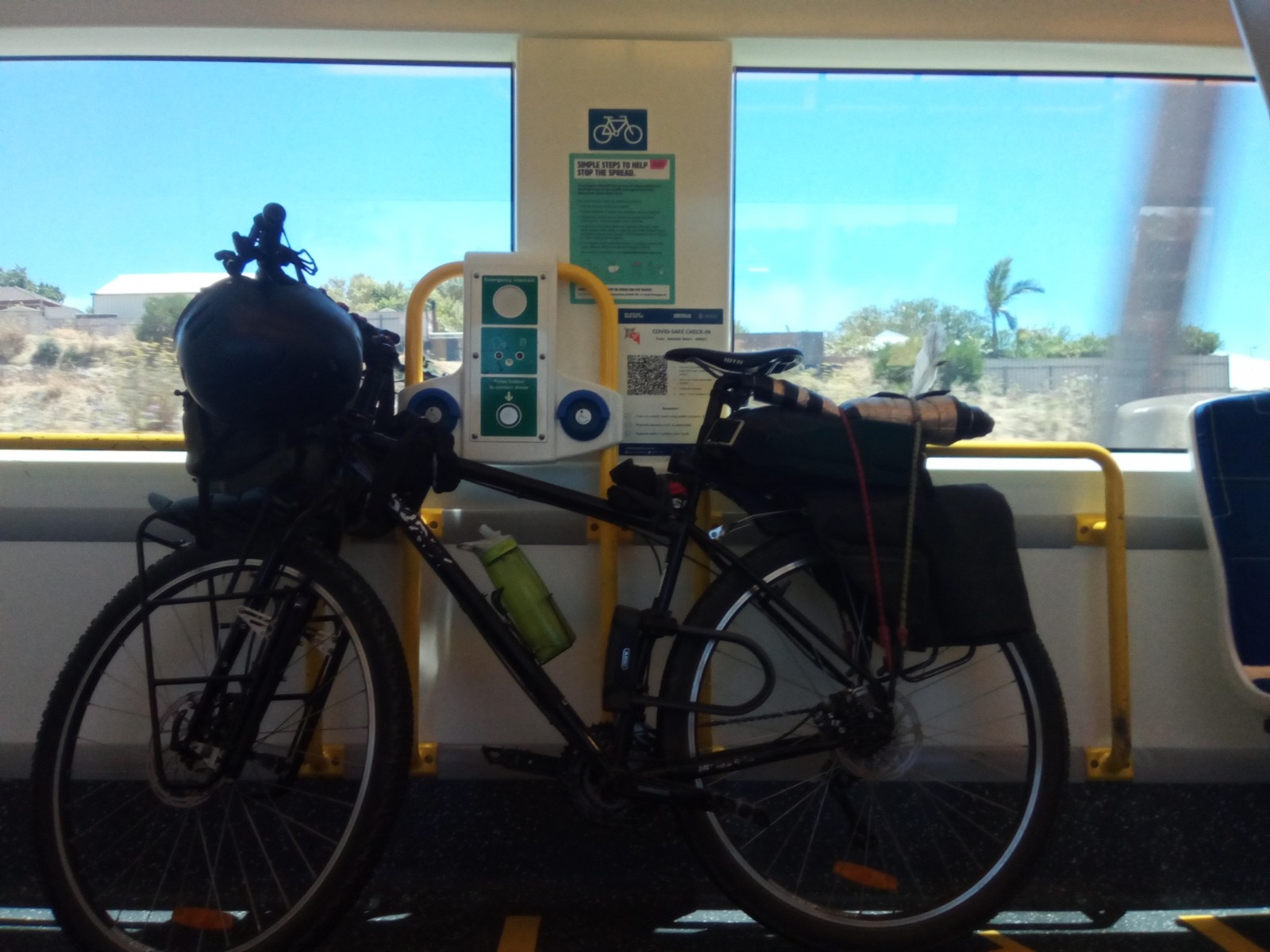 |
|
You can easily take your bike on almost any train in Australia. |
Hybrid approaches
Ultimately, the prospect of getting everywhere solely by bike is impracticable and probably undesirable for most people. Happily, cycling more is far from an all-or-nothing decision! There are a number of ways you can supplement a lifestyle still based on a cycling core.
Train and Ride
This is my personal favourite. This method greatly extends your travel range for no extra effort while bringing your total travel time often within about 30 minutes (or less!) of the same trip done by car. Most trains in Australia will have provision for your bike, but check your local regulations as this can be subject to certain restrictions.
Cycling Plus Car Share (no privately-owned car)
Most people need a car sometimes. But instead of owning your own, why not borrow one from a family member, friend, or neighbour for a longer trip once in a while, or for something like moving house? You could even organise a joint-ownership arrangement as a group of households in your area. These days there is an abundance of commercial vehicle sharing platforms too like Go Get, Flexicar, and Car Next Door. If you find you can achieve things with a bike 80-90% of the time, this can be a financially freeing approach.
E-Bikes
E-bikes (or ‘pedelecs’) have come a long way in the last few years. For those with limited physical capacity, travelling long distances, or transporting multiple young children the electric assistance they offer can dramatically increase the potential of living car-free, plus you can take them on the train just like a standard bike. However, purchasing an e-bike new or even converting your existing bike can be quite expensive.
Cycling Whenever You Can
Many situations still demand a privately owned car, but even here there is much room to reduce dependency. It’s easy to be in the habit of simply using a car for everything, when we really don’t have to! Cycling 30-40% of the time still yields great benefits.
2. Confidence and Safety
Maybe it’s been a while since you were on two wheels, or maybe you’ve never really ridden much before. There’s always that first hump of beginner’s awkwardness, but the good news is, especially if you learned as a child, it takes surprisingly little time to build basic proficiency. By far the best way to get into cycling is to do it with others!
Happily, cycling injuries are rare and usually minor, and there are many way to make it safer. For road rules and tips, see https://www.bicyclenetwork.com.au/tips-resources/road-rules/.
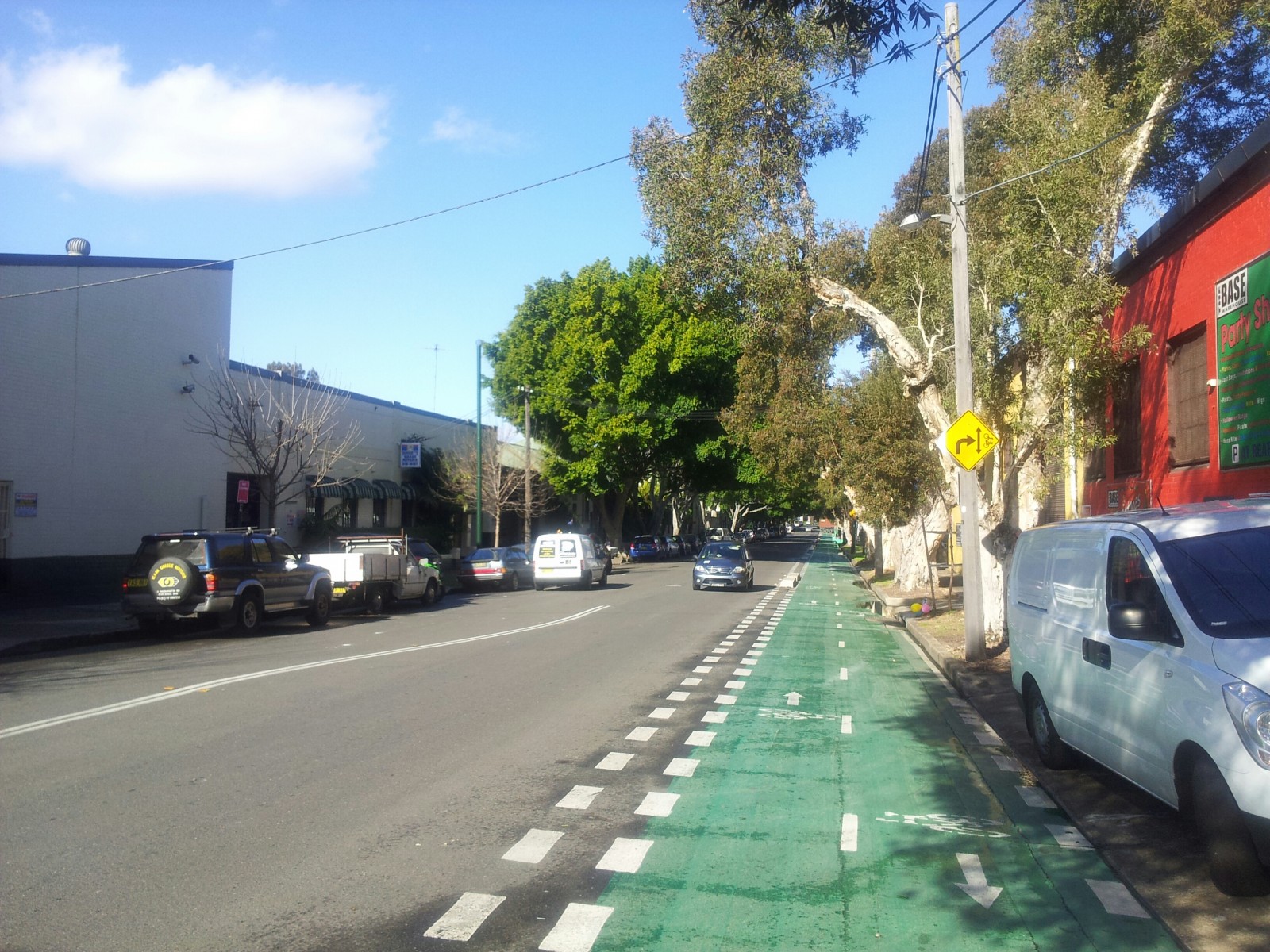 |
|
Dedicated lanes make things safer. Photo: Maksym Kozlenko. |
3. Terrain and Lack of Infrastructure
Perhaps you live in a particularly hilly area, or somewhere with slim road shoulders and few dedicated cycling lanes and paths. These can be significant challenges. Regional and rural areas, in particular, can suffer from a lack of good cycling infrastructure and often have higher speed limits for passing cars. Ultimately, these challenges must be weighed context-to-context and cyclist-to-cyclist. If you feel the cycling infrastructure is lacking in your area you may also choose to make your voice heard: you’re unlikely to be the only one who thinks so. Unfortunately, most urban planning is still done with the motor vehicle primarily in mind. Even so, sometimes good routes can exist without our knowing. For help planning a route in your area, check out https://www.bicyclenetwork.com.au/tips-resources/maps-and-rides/, play around with the cycling filter on Google maps, or try out a cycling route planning app such as Bikemap.
Hills can be intimidating, but be assured the more you ride the easier they will become: remember your gears!
4. Clothing, Sweat, Weather
 |
|
|
Commuting through urban woodland. Photo: Nick Carson. |
Do you work a job with a professional business dress code? Maybe you’re going to a nice dinner or a party and feel cycling might limit your clothing choices. Perhaps you’re worried the weather or the distance will mean you arrive sweaty or soaked by the rain. These are common concerns. Especially if a workplace has showers, many cycle commuters simply bring two sets of clothes and change before clocking in. In the absence of a change room though, with a bit of savvy you can ride a bike in just about any outfit. A raincoat (and optional rain pants) is an essential piece of kit for inclement conditions.
Sweat can be minimised by shedding layers down to a minimum, but if it’s hot or hilly it does become a little inevitable. It’s open to personal discretion how sweaty one can be on arrival and remain ‘presentable.’ As above, however, it’s worth noting that we live in a society where physical exertion is increasingly viewed as a side-activity: something to be done at special times in special clothes in special places. By contrast, arriving with a bit of sweat on your brow can help re-normalise physical activity as part of regular life, which leads us to…
5. Fitness
Cycling is one of the least demanding forms of exercise: it utilises some of your largest and most powerful muscle groups in a very low-impact form of aerobic activity. Coupled with the genius of gear ratios, cycling allows you to fly along for only the effort a brisk walk. As a result, it takes surprisingly little time to become ‘bike-fit’: I’ve seen many women and men of different ages and fitness levels become comfortable with cycling in under a month. After all, you don’t need to be a Tour de France rider to cycle to work, the local store, or to visit a friend, and the level of basic functional fitness gained by doing so feels great as you go about the rest of your day.
6. Storage – where to keep it?
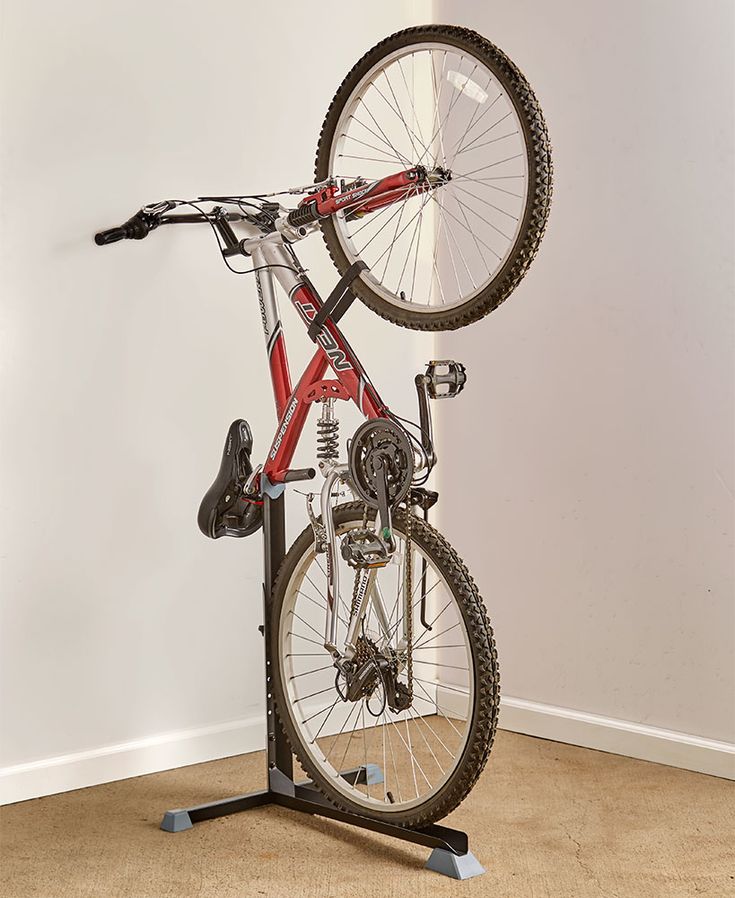 |
|
| Bike Nook: a freestanding indoor storage option. |
For those without outdoor enclosed space like a garage, this can be a significant challenge. Renters, especially, can be up against it if bikes are not allowed indoors. When considering options, remember that any choice which makes it a hassle to access your bike will inherently discourage use.
Outdoor possibilities for homes without sheds include down the side of the house, on the balcony of an apartment, or on the front porch under a veranda. Just make sure it’s covered and locked.
If space inside is at a premium, home-owners have access to a range of clever wall-mounting solutions. But even for those not able or unwilling to drill into walls, there are a number of free-standing, out-of-the-way options.
It is also worth considering secure storage possibilities elsewhere such as at your workplace or the free bicycle cages along many train lines (eg. Parkiteer).
7. Basic Equipment and Maintenance
Sometimes the biggest block to cycling is lacking the gear or know-how to get started. The number of products and variety of terminology can be a little overwhelming.
Bike basics
The most important factor in a bike is whether it is sized and adjusted well for you. Adjust your seat until your leg is almost (but not quite) straight at its lowest point.
If you’re not sure about anything, take your bike along to a bike shop or community bike shed and they’ll assess it for you. Don’t be afraid to ask questions, most bike people are friendly and happy to help. Most of the time though, an old bike just needs some chain oil and a few tweaks, many of which can be done yourself! Online tutorials are invaluable for this (I like the ones from Park Tool). For those keen to learn, some priorities would be:
- Achieving correct tyre pressure (easy)
- Oiling your chain (easy)
- How to tighten/loosen various elements like seat, handlebars, rack mounts etc. (easy)
- How to remove your wheels and change a tyre/tube (easy-moderate)
- How to adjust your brakes (easy-moderate)
- How to adjust your gears (moderate)
Essential equipment
- Lock – check out thebestbikelock.com.
- Lights – don’t ride at night without them!
- Tyre pump – based on the valve you have: either ‘schrader’ or ‘presta.’
- Chain oil/lube.
- An Allen key set (metric) for adjustments.
Very useful (but optional) equipment
- Water bottle and water bottle cage/holster.
- Rear mudguard.
- Phone holder for on-the-go, hands-free navigation.
- Small bike pump, spare tube, and patch kit (with tyre lever) for the occasional puncture.
8. Transporting stuff
With the right equipment, you can carry pretty much anything on a bike. For everything else, there’s the cargo bike or bike trailer. In my experience, moving ‘impossible’ loads on a bike comes down to three things:
The right mindset: approach with curiosity and resourcefulness – ‘how would I do it on a bike?’
Racks and straps: front and back racks provide stable platforms from which to hang bags, support baskets, and tie down bulky loads. Most common aluminium racks support 15-25kgs, but certain steel racks can handle far more (up to 60kg)!
Bags: a backpack will only get you so far. Panniers (bags that hang from the sides of a rack) are a staple for commuting and grocery runs: a single one of these has a capacity of 20+L, and you can use two per rack (ie. up to four!).
The cargo bike and child trailer are staples for folks with young families. While these options are a greater financial investment, in some contexts they can truly render the car completely unnecessary for a whole household (especially a cargo e-bike!). For more on car-free family life, check out Cathy Cook’s reflections in Manna Matters Nov 2013.
Of course, there are always limits. Chauffeuring elderly people or those with physical disabilities is still wiser by car, and some loads remain prohibitive. More than that, not everyone is ready or able to commit the time, energy, or money toward a bike that will enable them to do most of what they need to on two wheels. Still, you might be surprised how much you can achieve with a simple back rack and two panniers!
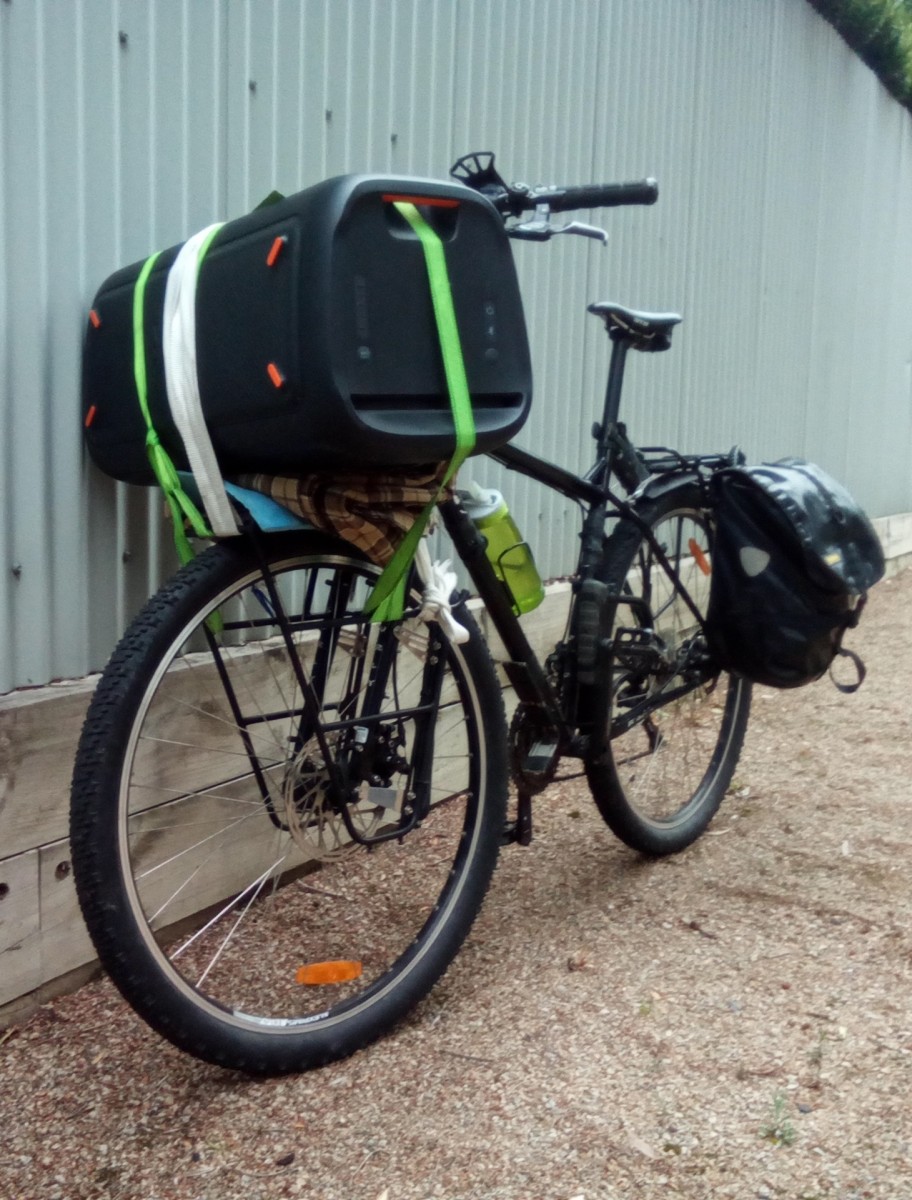 |
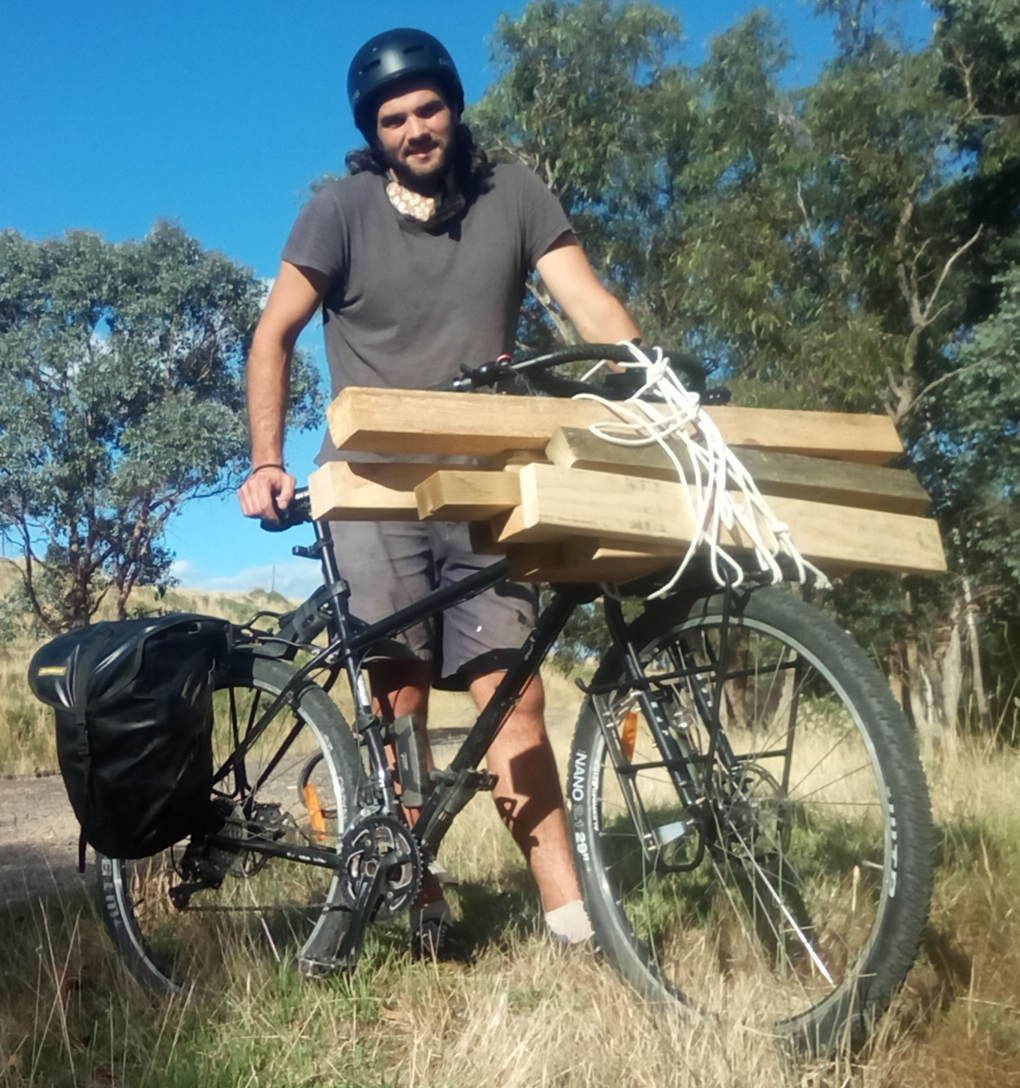 |
 |
| A large speaker... | Some wood... | A chair and an inflatable boat! |
Changing our Mental Road Maps
In 1949, the average Brit cycled 474kms per year, but in 2018 managed only 80kms. By contrast, Danes today cycle more than ten times that! Bikes have only become more affordable and far nicer to ride than those in 1949, but since then some societies have been more profoundly shaped by the personal motor vehicle than others.
Even people with cars can cycle far more. Simply by riding more and driving less we begin to break a cultural and personal dependency that can keep us shut out from certain conceptions of the good life. It’s so easy to default to the car and see cycling as merely a second-best thing, or worse, to cycle only as a form of sacrifice on the altar of health or to appease the angry god of emissions targets.
At its heart, cycling is simply an alternative answer to the question of personal transport. It has real disadvantages, but also unique advantages. Compared to driving, cycling frees up income and increases our interaction with the world outside and with the people we see as we pass by, cycling is fun and adventurous—it invites us down that side street or to stop in at that strange shop—cycling is quieter, calmer, and puts us more in touch with our bodies. So if it’s been a while—or never at all—hopefully this guide has helped you consider what’s holding you back and prompted you toward new possibilities.
 |
| Friends of the author from Castlemaine, Victoria, with their cargo e-bike and child trailer, plus extra-large panniers! |
